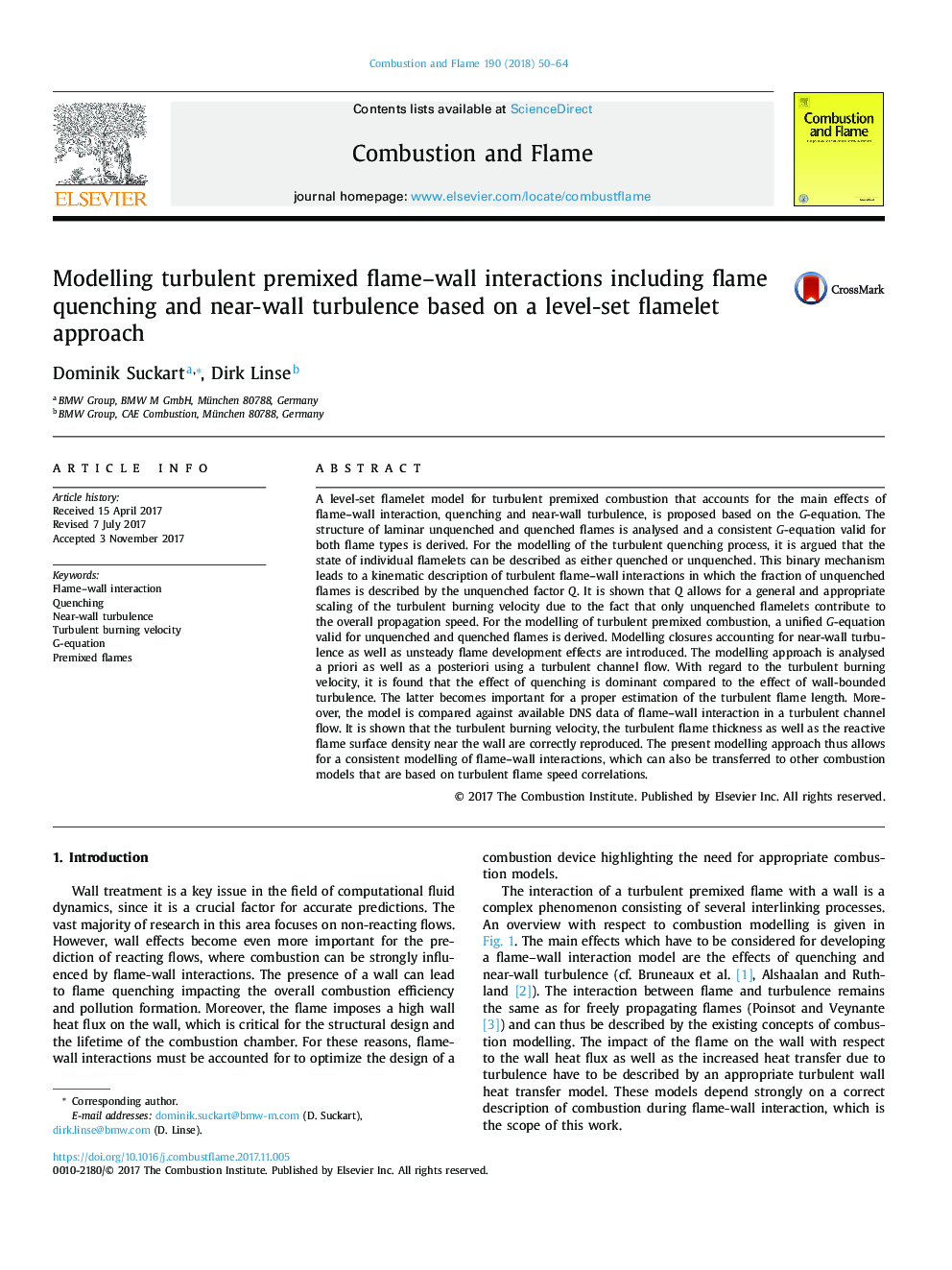| کد مقاله | کد نشریه | سال انتشار | مقاله انگلیسی | نسخه تمام متن |
|---|---|---|---|---|
| 6593804 | 1423547 | 2018 | 15 صفحه PDF | دانلود رایگان |
عنوان انگلیسی مقاله ISI
Modelling turbulent premixed flame-wall interactions including flame quenching and near-wall turbulence based on a level-set flamelet approach
دانلود مقاله + سفارش ترجمه
دانلود مقاله ISI انگلیسی
رایگان برای ایرانیان
کلمات کلیدی
موضوعات مرتبط
مهندسی و علوم پایه
مهندسی شیمی
مهندسی شیمی (عمومی)
پیش نمایش صفحه اول مقاله

چکیده انگلیسی
A level-set flamelet model for turbulent premixed combustion that accounts for the main effects of flame-wall interaction, quenching and near-wall turbulence, is proposed based on the G-equation. The structure of laminar unquenched and quenched flames is analysed and a consistent G-equation valid for both flame types is derived. For the modelling of the turbulent quenching process, it is argued that the state of individual flamelets can be described as either quenched or unquenched. This binary mechanism leads to a kinematic description of turbulent flame-wall interactions in which the fraction of unquenched flames is described by the unquenched factor Q. It is shown that Q allows for a general and appropriate scaling of the turbulent burning velocity due to the fact that only unquenched flamelets contribute to the overall propagation speed. For the modelling of turbulent premixed combustion, a unified G-equation valid for unquenched and quenched flames is derived. Modelling closures accounting for near-wall turbulence as well as unsteady flame development effects are introduced. The modelling approach is analysed a priori as well as a posteriori using a turbulent channel flow. With regard to the turbulent burning velocity, it is found that the effect of quenching is dominant compared to the effect of wall-bounded turbulence. The latter becomes important for a proper estimation of the turbulent flame length. Moreover, the model is compared against available DNS data of flame-wall interaction in a turbulent channel flow. It is shown that the turbulent burning velocity, the turbulent flame thickness as well as the reactive flame surface density near the wall are correctly reproduced. The present modelling approach thus allows for a consistent modelling of flame-wall interactions, which can also be transferred to other combustion models that are based on turbulent flame speed correlations.
ناشر
Database: Elsevier - ScienceDirect (ساینس دایرکت)
Journal: Combustion and Flame - Volume 190, April 2018, Pages 50-64
Journal: Combustion and Flame - Volume 190, April 2018, Pages 50-64
نویسندگان
Dominik Suckart, Dirk Linse,